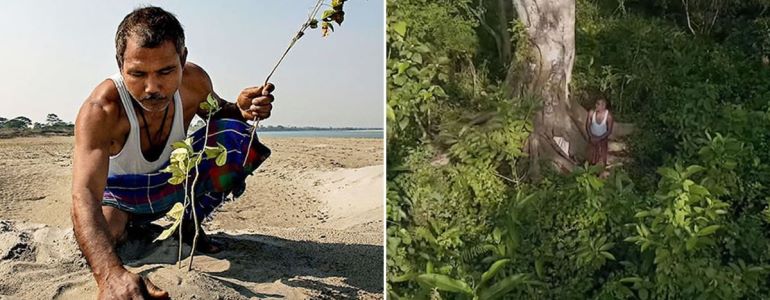Regrowing Forests Showcases of Restoration and Profitability
- By Aleksandar Ristevski
- 27 Apr, 2020

Regrowing forests has shown to have a substantial positive economic impact on societies. Time, when we thought that growing forests are just some tree-hugging hippies endeavours is over. It is clear that in order to keep local economies healthy, each country should set regrowing forests as a top priority.
Following are some of the success cases around the world.
Iceland - retrieving 1000 years lost
Iceland, a Nordic island country in the North Atlantic, with the area of 102,775 km2 and population of 364,260 and GDP of just $19 billion(similar size like South Korea but with 142 times smaller population). When Vikings first settled the island - 30% of the land was covered in trees. Over few hundred years Iceland’s forests were extensively cut for farming land, overgrazed by sheep (imported by settlers) and eroded by storms. Combined effects caused a loss of topsoil and risking desertification.
Many farms have been abandoned, while 3/4 of Iceland area is affected by soil erosion.
Today, the Icelandic Forest Service is carrying out a massive task of reforestation finding appropriate genetically suitable species and applying a range of other scientific measures resulting in Iceland’s forests slowly coming back.
Their efforts are showing how forestation can have a positives impact on economy and ecology but also overall atmospheric CO2 deposit.
“Iceland Is Growing New Forests for the First Time in 1,000 Years”
Video provided by National Geographic is showing the power of science, exploration and storytelling that can change the world.
Africa - Holistic Management
More than 65% of the world’s grasslands are turning into deserts. Landslides and flash floods, accelerating climate change, affecting agriculture and causing failure of traditional grazing societies.
Allan Savory usage of Holistic Management completely transformed his land in Zimbabwe. He explains that to reverse Climate Change, surprising to common beliefs, we need to use grazing animals and wildlife to improve soil fertility and regrow healthy diverse forests reclaiming degraded land and deserts.
Allan’s institute has a mission to promote large-scale restoration of the world’s grasslands through Holistic Management, a process of decision-making and planning for social, economic, and environmental considerations giving people the insights and management tools necessary to understand and restore nature.
“Running out of Time | Documentary on Holistic Management”
“How to green the world’s deserts and reverse climate change | Allan Savory”
References:
- Savory Official Site
- Allan Savory
- Allan Savory - TED
- How to fight desertification and reverse climate change
India - 100-year forest in 10 years
Shubhendu Sharma left his high paying job as an engineer to plant trees for the rest of his life. By using the unique methodology pioneered by Japanese botanist Akira Miyawaki that involves planting dozens of native species in the same area, building dense native forests, that are maintenance-free after the first three years.
Shubhendu’s company Afforestt converts any type of land into a self-sustainable forest. So far they successfully created 33 forests across India in two years.
How to grow a forest in your backyard | Shubhendu Sharma
References:
- Shubhendu Sharma
- How to grow a forest in your backyard
- An engineer’s vision for tiny forests, everywhere
- Forest making for everyone, back us on Kickstarter.
- How to Grow a Forest Really, Really Fast
- Afforestt
- Video Tutorials to make your own Forest - Kickstarter
The United States - rewild/impact of apex predators on CO2 sequestering
Everyone knows that wolves go to rivers to drink, but people did not expect that their presence can change rivers.
George Monbiot explains how wolves after being reintroduced in Yellowstone National Park, caused a domino effect - changing the behaviour of the overgrown deer population, allowing forests to grow again, attracted many new large and small animal species finally stabilizing the banks of rivers and making them less susceptible to erosion.
George also explains that contrary to popular beliefs, reducing the number of whales cased reduction of fish and krill, and also reducing the amount of CO2 oceans are sequestering. He is exploring the idea that extinct species should be reintroduced in order to fight human-made Climate Change.
For more wonder, rewild the world | George Monbiot
also, watch How Wolves Change Rivers
As an addition to the story a short video overview from Atlas Pro YouTube channel, showing a few similar techniques such as the creation of animal corridors, joining forest and plant diversification, which could positively impact faster forest regeneration and the more sustainable way of fighting Climate Change.
